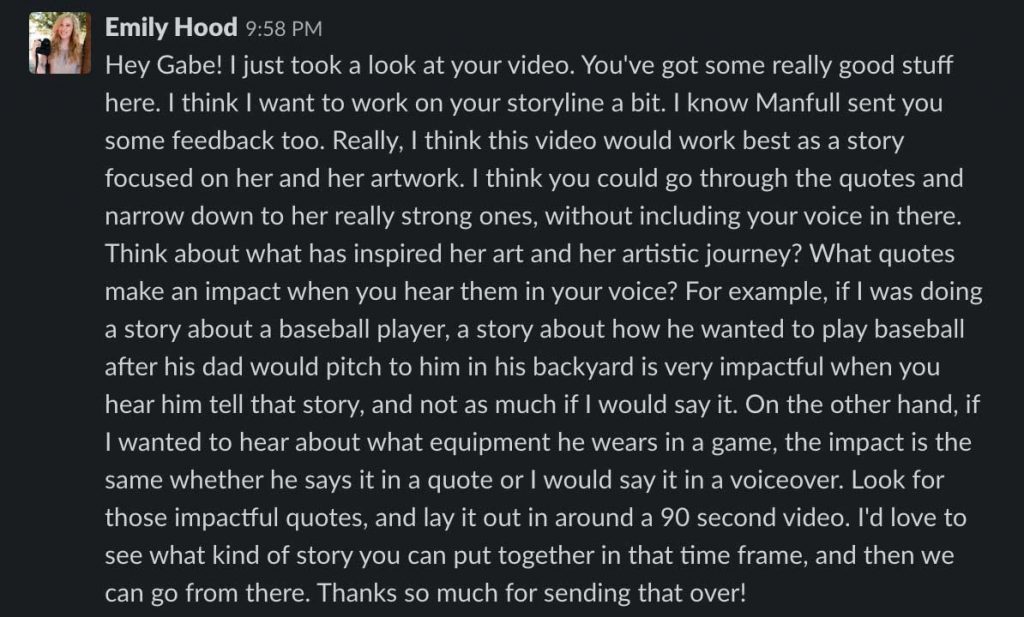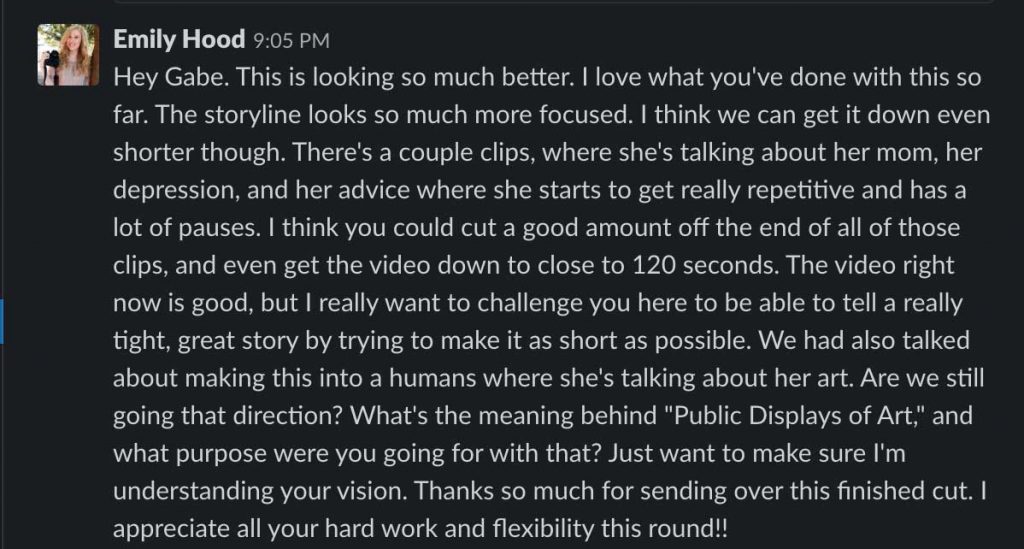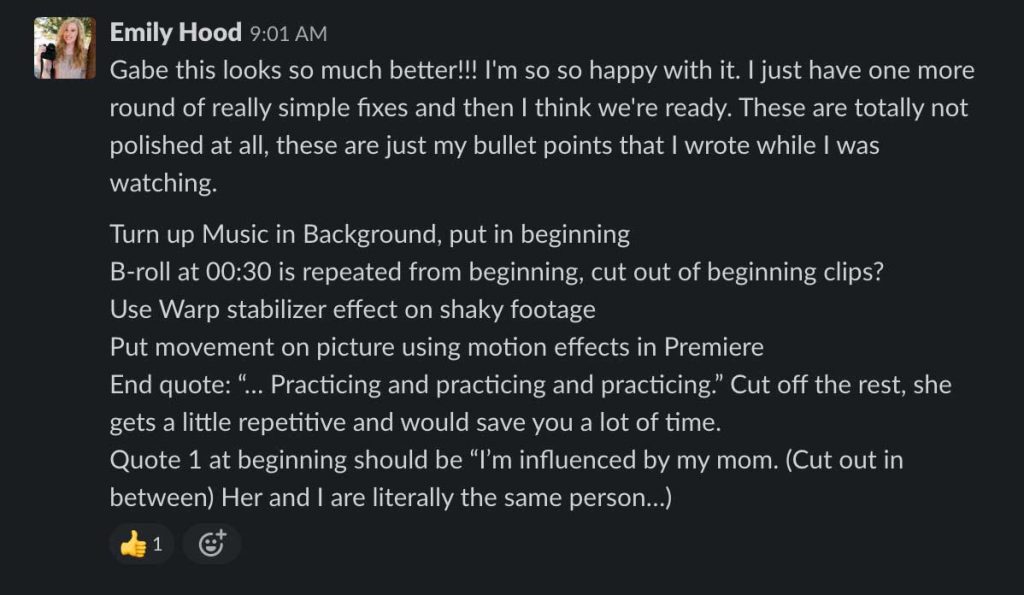During my senior year, I worked to create a new editing system. We had almost a brand new staff that year, and we wanted to give them a system to ensure we created the highest quality videos and content.
Our staff was required to submit their videos to my adviser and me so we could give them detailed feedback. Feedback was sent via our Slack Workspace to provide the staff with as much time as possible to work in class. Each video went through many rounds of revisions before landing at its final product.
While I typically help others perfect their broadcast stories, I also utilize AP style when editing my own stories. For example, a few of the things I focus on correcting are abbreviations for months, spelling of numbers less than 10, and italicizing names of stories and publications.
To show you my editing process, I will go through an example of a video I worked on with a staffer.
This video was supposed to be a news story about students who were displaying their art at a local coffee shop. After some technical difficulties, the staffer did not have much footage that related to their original focus. This was the first video that was sent, and the feedback I provided.

The video struggled with having a solid focus, storyline and b-roll. It was also far too long and did not follow some basic broadcast video rules like cutting your voice out of questions in an interview. We suggested that he abandon his original focus of a news story and turn the video instead into one of our Humans of FHN feature videos about his subject and her artwork.
After giving him feedback, he sent a second version of the video, posted below, that made some adjustments and received more feedback from me.

While this new version had a much more focused storyline, it was still long and could be improved to have a more clear focus. I wanted him to work on getting the story much shorter and really hone in his vision for what it should look like. This was the third version of the video that I received, and the feedback that was sent with it.

The story began to be much more focused and the length was cut in half from its original version. The video now had a clear format that was simple for the viewer to watch and understand. This was the final version of the video, posted to the FHNtoday YouTube Channel.
While the story was a large improvement from its original version, I wanted to work with the staffer to improve his b-roll and interviewing skills. I wanted him to find shots that better related to the focus and ask questions to not only gather important information, but also find more quotes with emotion.
I helped to teach lessons that worked on these skills. Before his next assignment, we took time to write a focus statement for his topic and brainstorm b-roll ideas related to the focus. We also learned about the 21 Question Formula for conducting interviews and worked to generate insightful questions for his new interviews.
This was the video he made during our next deadline cycle.
Our new editing process generated better videos with more focus and helped the staff improve each month.

